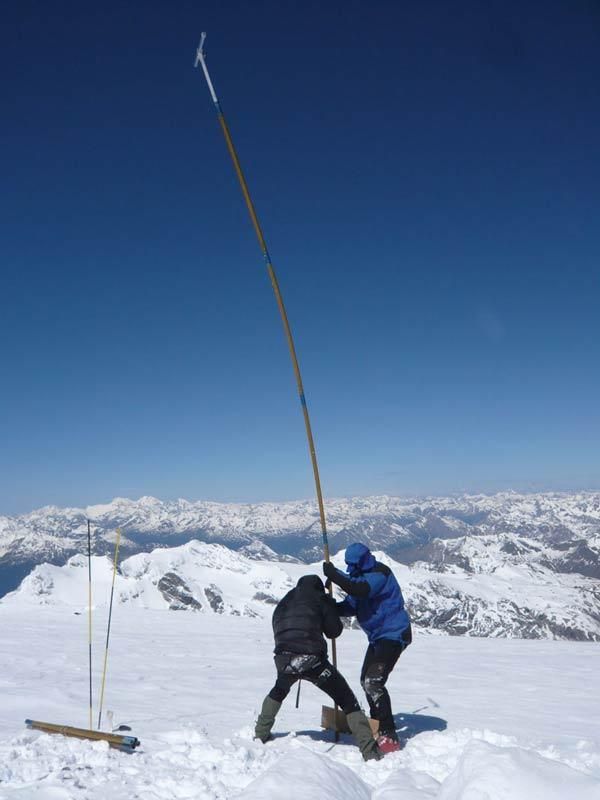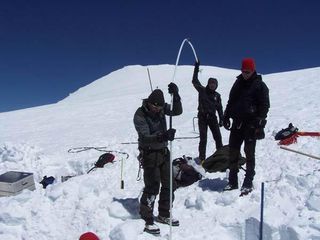
Alpine Glacier May Melt, Destroying Climate Data

The highest glacier in the eastern Alps is little-studied, and could contain within its ice more than 1,000 years of the local climate record. But how long that record will be around is a worrying matter for scientists.
Global warming could take a toll on the ice, melting it before researchers can take enough samples. This worry has sent scientists scrambling to retrieve data before the glacier disappears. [Related: Tracking a Retreating Glacier .]
The glacier, Alto dell'Ortles, lies 12,812 feet (3,905 meters) above sea level, and, as far as glaciers go, is dainty: The area it covers is just under a half square mile (1.04 square kilometers).
An even smaller area, only about 10 percent of the glacier, likely holds a good climate record, according to a new study in the Journal of Glaciology.
"This is a mountain that is very difficult to climb, and that has probably prevented researchers and glaciologists from Europe from going up there to study the ice," said study team member Paolo Gabrielli of the Byrd Polar Research Center at Ohio State University.
However, Gabrielli said, the glacier offers an ideal environment to study climate change in the region.

Drilling into ice
Sign up for the Live Science daily newsletter now
Get the world’s most fascinating discoveries delivered straight to your inbox.
Scientists from Ohio State and five European universities have explored the glacier three times since 2007.
In 2009, the researchers drilled a 33-foot-long (10 m) core at the glacier's surface and dug snow pits to gauge how well the ice had been preserved over time. Later analysis showed that while some surface melting had partially degraded the recent record, ice formed before 1980 is likely unharmed.
The team also used ground-penetrating radar to map the thickness of the glacier. Based on that data, they hope to be able to retrieve a 230-foot-long (70 m) core through the ice all the way down to the bedrock below the glacier .
"There is a possibility that we could find ice reaching back 5,000 years, but that's just speculation until we actually drill," Gabrielli said.
Human history record
Researchers believe the Ortles site could offer perspective on how climate may have influenced the human history of the region.
"We'd like to find evidence of whether climate conditions influenced the development of agriculture here, or even the start of primitive mining and smelting operations," Gabrielli said. "We may even be able to see indications in the ice record of when people came to the region," he added.
If full cores are retrieved, the ice samples would be analyzed for a host of climate signals, including oxygen isotope ratios, heavy metals, organic material, sulfates, chlorides, dust, pollen and volcanic ash, all of which can indicate past climate conditions. That record would then be compared to records from other cores drilled from ice around the globe.
The research team has submitted a proposal to the National Science Foundation to support the planned drilling project.
"This is basically the only hope of finding a record of changing climate conditions at high elevations in this part of Europe," Gabrielli said, "but unfortunately, time is running out to save this ice."













